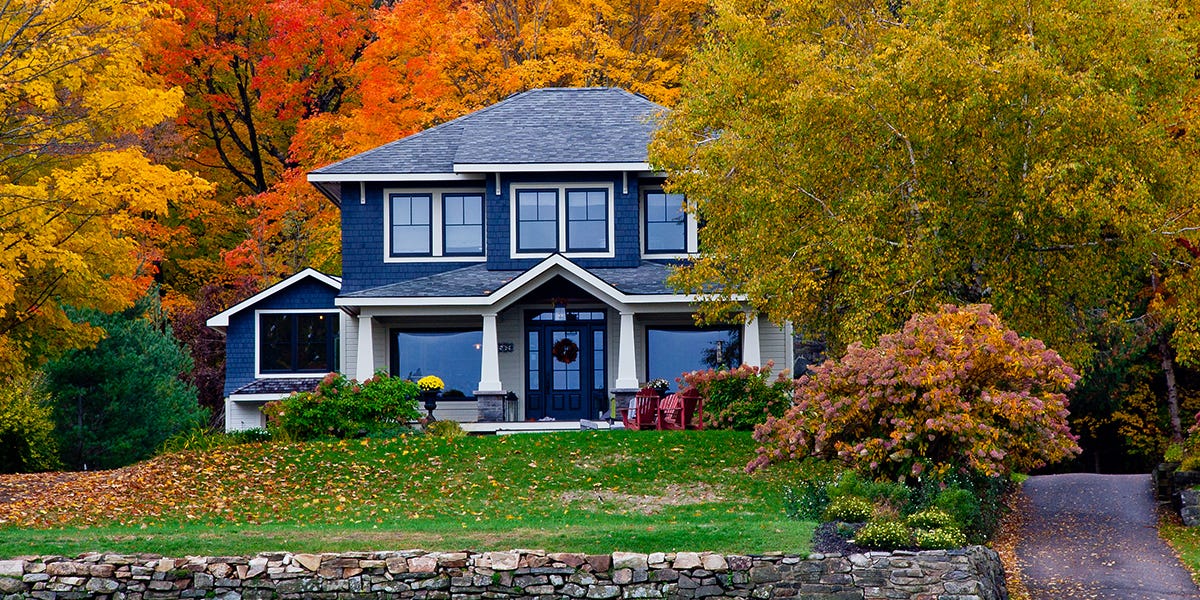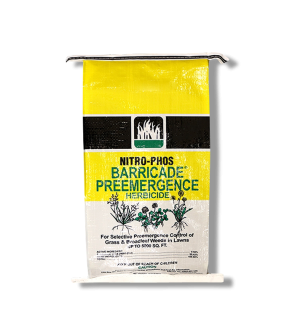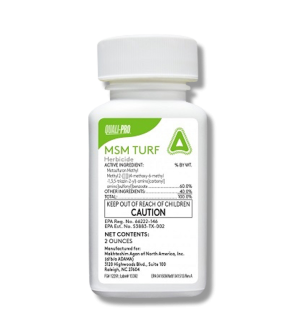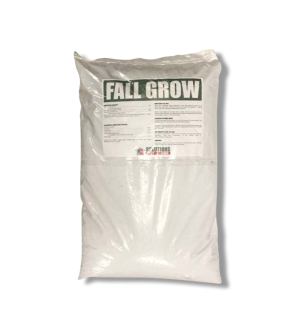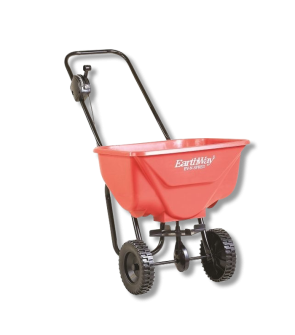Fall Lawn Care Guide
Most Effective Products
Fall Lawn Care Guide
This article is a general DIY guide for turf problems and weed issues you would encounter during the fall season. Using the products and methods suggested, you can have a healthier lawn during the fall season that will endure and thrive in the spring.
Contrary to popular belief, caring for your lawn in the fall season will have more of an impact on its appearance and health than spring. This stems from the popularity of spring being a time of regrowth and lawn renovation, when in reality it is a recovery period from the fall and winter seasons.
Beginning a fall lawn care program is ideal because of the ending of summer heat and drought activities and the beginning of cooler temperatures along with the warm sun and soil during this period. All of these features will help your turf to store nutrients and germinate more easily without additional stresses.
An effective fall lawn care program should begin in September and continue to November since this is the period when your turf is beginning to store nutrients and moisture for the upcoming seasons.
Fall is a great time to add fertilizers, herbicides, reseed, and control weed activity for the rest of the year. By implementing these steps and products as early as possible in the DIY guide to fall lawn care you can avoid less pesticide and herbicide applications throughout the year thus reducing time and cost.
Identification

To properly care for your lawn with the appropriate herbicides you will need to know the difference between warm-seasoned grass and cool-seasoned grass. Each species of grass will belong to one or the other grass categories. As a result, the type of herbicide and time of care will vary.
For an example of the different grass categories refer to the image above. On the left-hand side of this picture is Kentucky Bluegrass, an example of cool-seasoned grass. The left hand-side is Bermudagrass, an example of warm-seasoned grass.
Cool-Seasoned Grasses:
If you live in the northern portion of the United States then your turf should consist of cool-seasoned grasses like Kentucky Bluegrass, Annual Ryegrass, Perennial Ryegrass, Fine Fescue, Tall Fescue, and Creeping Bentgrass.
Cool-seasoned grasses grow well in cooler temperatures from 65 to 75 degrees Fahrenheit such as during the fall or winter season.
Warm-Seasoned Grasses:
Homeowners living within the southern portion of the United States will have lawns containing warm-seasoned grasses like Bahiagrass, Bermudagrass, St. Augustine grass, Centipede grass, Zoysiagrass, and Carpetgrass.
Warm-seasoned grasses will not grow as well as cool-seasoned grass during the fall and winter months. These types of grasses do better in hot, and humid temperatures between 85 to 90 degrees Fahrenheit.
Treatment
For best results of herbicides, begin in early September as this will help to lessen the amount of applications throughout the following seasons.
Following September, your warm-seasoned grass will begin to go into dormancy for the winter season so it is best to avoid applying fertilizer later on.
Before handling any type of herbicide or chemical solutions you will need to wear the appropriate personal protective equipment (PPE) such as chemical resistant gloves, masks, safety glasses, long-sleeve pants, long-sleeve shirt, coveralls or Tyvek suit, and closed-toe shoes with socks.
Step 1: Lightly Rake Your Yard Throughout the Season

The most important thing to do during the fall season is to remove leaves and fallen branches off your yard. Dethatching is not recommended for warm-seasoned turf as it is becoming weaker due to the upcoming winter season.
This may be common sense to some homeowners, but failing to get rid of the fallen foliage could be vary harmful to your lawn. Typically, in October you will begin to see leaves and other foliage falling of their stems or withering.
It is best to gently rake your turf at least once a week since leaves are continually falling off their branches throughout this season. If these vegetations are left on your lawn for too long it can gather moisture and prevent airflow, which can produce fungi diseases such as pink snow mold or broadleaf and grassy weeds in the following spring.
Step 2: Fertilize in Early September

Solutions 8-12-16 Fall Fertilizer is a granular fertilizer designed to release the essential nutrients for fall ridden turf without promoting excessive growth and strengthen turf roots for the cooler winter weather. For cool-seasoned grasses, you will want to use a slow-release granular fertilizer with concentrations of at least 5% nitrogen or more.
This granular product will work well in turf experiencing cooler, fall weather and will be applied with a push or broadcast spreader. We recommend using a broadcast spreader for large properties exceeding 1,000 sq. ft.
Prior to fertilizer application, you will want to mow your yard 1 to 2 days in advance to allow the product to seep further into your soil. Determine how much Solutions 8-12-16 Fall Fertilizer to use by measuring the treatment areas length and width in feet and multiplying them together (length X width = square footage). For general applications, you will want to use 5 lbs. of product per 1,000 sq. ft. of turf.
For specific nutrient level, you will want to convert the nitrogen level within the fertilizer to a decimal form and dividing it by the amount of nutrients needed. For example, say your lawn is needing 1 lb. of nitrogen from the Solutions 8-12-16 Fall Fertilizer.
You will divide the 1 from the level of nitrogen in the Solutions Fall Fertilizer, which is the first number in the sequence. You will take the 8 (convert to decimal form) in the Solutions 8-12-16 Fall Fertilizer and divide it by 1 to determine how many pounds should be used per sq. ft. (1 / 0.08 = 12.5 lbs.). Therefore, apply 12.5 pounds of fertilizer per 1,000 sq. ft. to supply 1 pound of nitrogen (if that is the level of nutrient needed in the soil).
Once you have calculated the appropriate amount of fertilizer to use you will then load the measured amount into the spreader and begin walking in the corner of your treatment area. Walk in a straight line from the corner of your treatment area to the other until you have covered the space in the middle. After application, water your treatment area with an inch of water to activate the granular fertilizer.
Step 3: Reseed and Repair Thin Lawns 45 days Before Frost

Reseeding is spreading grass seeds over the top of bare or dead patches of lawn. This technique is best applied for cool-seasoned grass in the second half of August to Mid-September.
Unfortunately, homeowners with warm-seasoned lawns will not be able to reseed their turf during the fall. Typically, warm-seasoned turf will be replanted in the second half of spring to late summer (July).
When caring for a newly planted lawn with cool-seasoned grass seeds you will want to first check the frost period within your location. Cool-seasoned grass seeds should have two months before the first frost of winter to germinate. You may evenly spread the grass seeds along the top surface of your soil by hand or through a hand spreader. Lightly water the seeded area once a day, but not to the point of run-off or puddles forming. At a height of 1 inch, water once a week with an inch of water.
Wait at least 30 to 45 days for your seeds to germinate before applying any type of pesticide or herbicide products.
Step 4: Apply Barricade Granular Pre-Emergent Herbicide in October

Barricade Granular Pre-Emergent Herbicide is an easy-to-use pre-emergent that is highly effective in preventing various weed growth. This granular product contains prodiamine 0.58%, which will eliminate targeted weeds underneath your soil before they germinate.
A pre-emergent application in the early months of fall will help to prevent broadleaf and grassy weeds from germinating over the winter months and emerging in the spring. Depending on the type of turf within your property, Barricade Granular Pre-Emergent Herbicide can be applied between 1.5 to 4 lbs. of product per 1,000 sq. ft. Determine how much Barricade Granular Pre-Emergent Herbicide to use by measuring the treatment area in feet and multiplying the length and width together to find the square footage (length X width = square footage).
Load the measured product into a hand or push spreader and then apply the Barricade Granular Pre-Emergent Herbicide in two perpendicular passes to attain uniform coverage. Make sure to water your treated area with at least 0.5 inches of water to activate the product.
To maximize weed control, Barricade Granular Pre-Emergent Herbicide should be applied before weeds have appeared on your lawn or after they have been completely removed.
For weeds that have already become established, we recommend using MSM Turf. This herbicide will work well against various broadleaf and grassy weeds within 1 to 2 weeks. The standard rate of application is 0.025 to 0.05 oz of MSM Turf per gallon of water per 1,000 sq. ft. You will need to use a pump or backpack sprayer to spray this liquid product on the top and bottom of foliage leaves.
Step 5: Water Lawn Until Ground Freezes

Even during the fall, your lawn should be watered with an inch of water per week.
Optimal periods of watering should be done early in the morning since turfs are usually inactive or slow-growing during this time. By watering in this time frame, you avoid your turf retaining water and growing diseases or weeds.
Of course, cool-seasoned lawns will have the highest amount of growing activity when compared to warm-seasoned grasses. Watering your lawn will help turf to grow deeper and stronger roots thus helping it to be more healthier during the spring.
Ideally, you will want to water your cool-seasoned or warm-seasoned turf until the ground becomes frozen. Watering after this will be prove to be ineffective as there is no way for water to properly soak into the soil due to the ice barrier.
Step 6: Mow until Grass Becomes Dormant

One common mistake for lawn maintenance is the decline of mowing by homeowners. Mowing should be completed until your turf becomes dormant or exceeds a height of 3 to 4 inches.
Warm-seasoned lawns will become dormant when temperatures are consistently cooler and lower than 85 degrees Fahrenheit, typically this weather is around October. In contrast, cool-seasoned lawns will become dormant during spring or summer when temperatures are higher than 75 degrees Fahrenheit.
During the fall season, make sure your lawn mower blade is adjusted to cut no more than 1/3 of the grass blades during each mowing. When grass is not continually growing at a steady pace then cease mowing activity.
Key Takeaways
When Should Fall Lawn Care Begin and End?
- A proper fall lawn schedule should begin in September and end in November.
How Many Times Should A Lawn be Fertilized During the Fall?
- Warm-seasoned or cool-seasoned lawns should be fertilized once during the early half of September. We recommend using a granular fall fertilizer like Solutions 8-12-16 Fall Fertilizer to strengthen your turfs roots during the cooler, winter months.
How to Control Weeds During Spring?
- Early application of a pre-emergent herbicide in October will help to prevent weeds during the winter and spring season. Barricade Granular Pre-Emergent Herbicide is a granular product that works well to fight against numerous broadleaf and grassy weeds.
